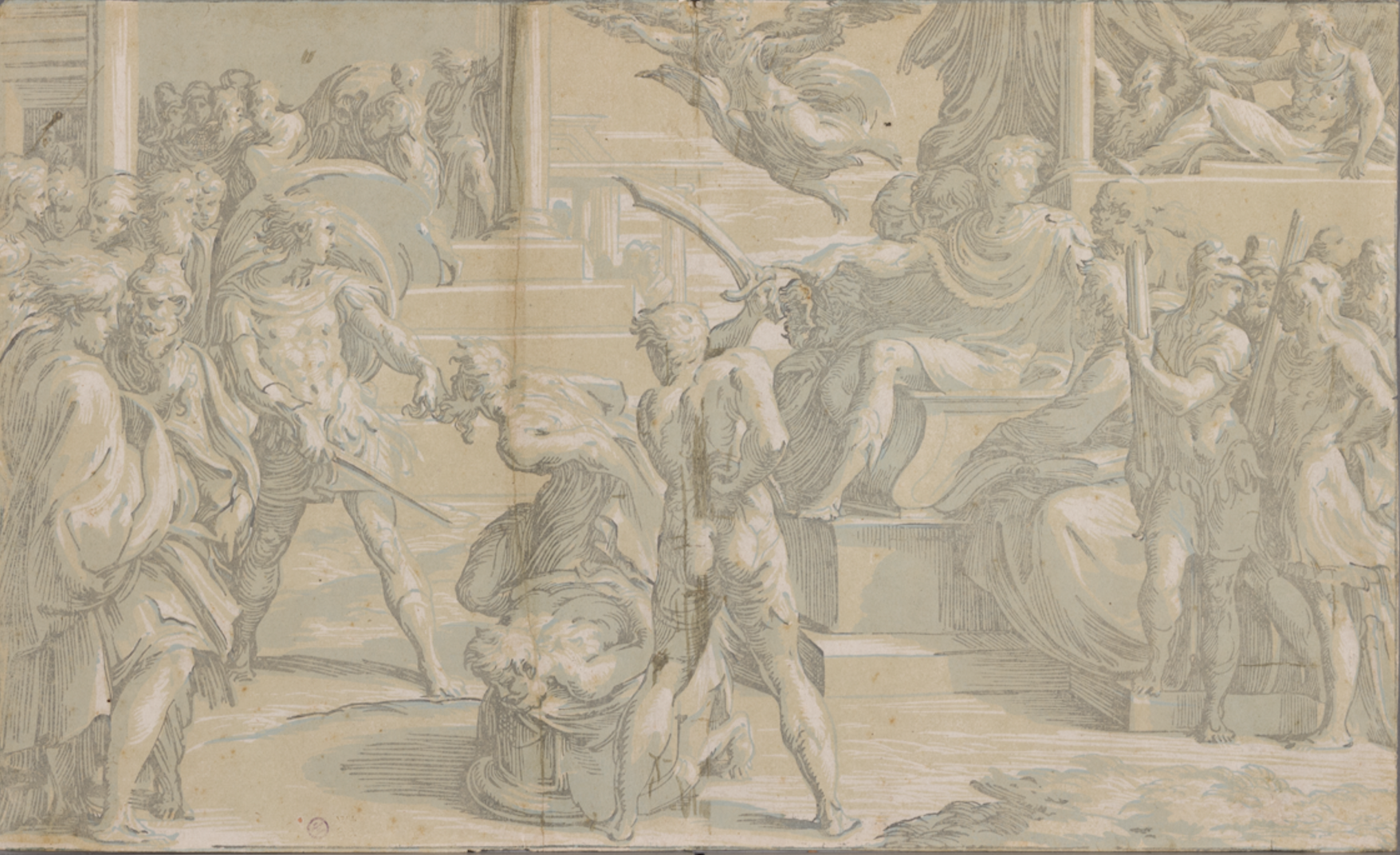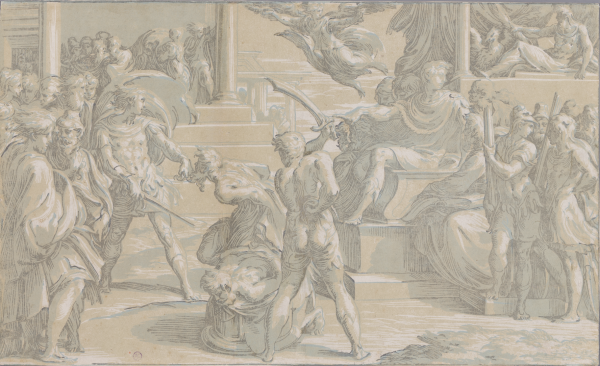The print above is Antonio da Trento’s chiaroscuro woodcut, Martyrdom of Two Saints, from the first half of the sixteenth century. The term chiaroscuro originates from the Italian "chiaro" and "scuro" meaning “light” and “dark,” respectively. As the name suggests, this technique sought to replicate the qualities of heightened drawings on colored paper that used contrasts of light and dark to express three-dimensional volume and depth. This effect was achieved by the superimposed printing of two or more blocks, each block printed in a different color ink; here, the woodcut is printed with three oil-based inks in the order of gray, light blue, and beige.
When Antonio’s print was acquired by LACMA in 2012, black overpaint was located in the torso and legs of the central figure.


Visual examination revealed that the overpaint covered areas of cracking in the support, suggesting that it was an early attempt to restore the print. Multiple scientific and imaging studies determined that the overpaint was carbon-based. But why was the overpaint used for this restoration so dark and conspicuous relative to the colors of the print?

The mystery was solved when conservation scientist Charlotte Eng discovered the presence of indigo in the dark grey and light blue inks using Raman spectroscopy. Raman spectroscopy involves directing a laser beam onto the surface of an unknown sample using a microscope objective. Some of the light scatters back into the system, generating a unique "fingerprint" by which materials can be identified. We compare this "fingerprint" with those collected from known reference materials; in this case we were able to use this technique to identify indigo. Indigo is susceptible to fading, so we concluded that the Martyrdom was most likely much darker and showed more contrast when it was first made. The black overpaint may have been applied when the inks were in better condition, thus matching the original tone of the print. As the woodcut faded over time, the overpaint had become more and more apparent.
Now that we knew more about the materials, it was time to start the conservation of the woodcut. The object had been torn in two pieces long ago and repaired. The adhesive used to attach the two halves of the sheet had since darkened, causing the discoloration of the paper. In order to reduce this discoloration, the old mends and attachments were removed and the woodcut was washed and treated with enzymes.

Losses in the support were filled with new paper and the print was reassembled. Following much discussion with curatorial staff and scholars both at LACMA and other institutions, it was decided to mask the overpaint with media that could easily be removed in the future. Reversibility is extremely important in conservation, as we anticipate that objects will continue to change over time, and the materials that we use today may not be appropriate in 100 years.

The conservation of Antonio da Trento’s Martyrdom was the product of a successful collaboration between scientists, curators, and conservators. This print will be on view in a forthcoming exhibition on Italian Renaissance chiaroscuro woodcuts in 2018 so come see it in person then!



